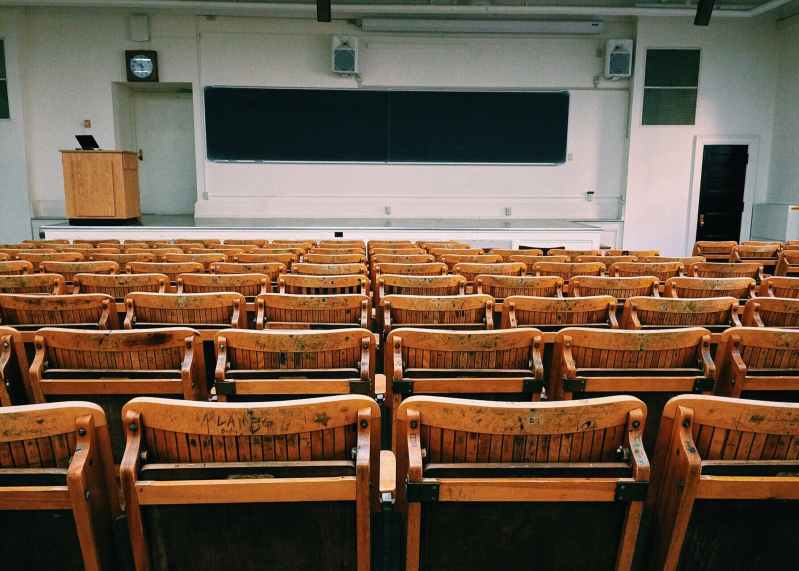I remember the exact moment when things started going sideways.
I was with my friends at the library, procrastinating for an upcoming calculus final, when the president of my Science Olympiad team called. He told me that, because of public health concerns with COVID-19, our state competition was canceled. The next day, my principal announced that our school would switch to an online learning model.
Shortly thereafter, Gov. Mike DeWine hurriedly shut down Ohio, forcing restaurants, gyms and nonessential businesses to close their doors. Our state, like many others, was thrown into a panic. And COVID-19 cases would continue to rise despite the shutdowns.
Initially, when all these shutdowns occurred, I was shocked. I thought that people were sensationalizing the virus. I was convinced that we would return to high school and have normal classes, prom and graduation. I had a misguided optimism about the virus; I assumed it would be gone by the summer. While I had a lot of hope, I was blind to the severity of the crisis.
Hope isn’t an appropriate response to 183,000 deaths. Hope isn’t an appropriate response to overworked healthcare systems. Hope isn’t an appropriate response to marginalized communities being ravaged at disproportionate rates by this virus. Hope isn’t an appropriate response to the worst economic crisis since the Great Depression. Unfortunately, college campuses nationwide continue to respond to the pandemic with this foolish hope. They’re not planning for the worst, and they’re not protecting their students.
Schools should be sensibly pessimistic: They should expect the worst from this pandemic and plan accordingly.
I saw how some schools didn’t plan for the worst. A lot of my high school friends attend the University of Notre Dame, and they started classes relatively early. In their Snapchat stories, I saw students freely roaming around campus and hanging around their quad — as if the pandemic was a distant memory. The statistics from campus, however, told a different story. Following an off-campus frat party, cases ballooned to 147, with 80 new cases reported on Aug. 17. Following this initial spike, Notre Dame President John Jenkins announced that in-person classes would be canceled and replaced with online learning — but it was far too late. Even with stricter social distancing guidelines in place, total case numbers on their campus continued to rise, jumping to 577 confirmed cases as of Aug. 31. And on Sept. 2, they resumed in-person classes — a move which will likely lead to another spike in cases.
The negligence of school administrations like this is why I see the need for sensible pessimism. When Notre Dame first opened, officials opened their gates to all four graduating classes with in-person teaching. A plan like that requires students to adhere to mask-wearing guidelines and social distancing regulations — and a plan like that requires senseless optimism, because it can work only under the assumption that students are largely compliant with the rules.
Individual decisions to follow public health guidelines can help stop the spread of the virus. But preventing large campus outbreaks is an institutional — rather than individual — responsibility.
But instead of recognizing the power that they wield, colleges tempt fate.
Nationwide, kids have proven themselves incapable of following the rules. Holy Cross, Syracuse, Oklahoma State, Iowa State, Purdue, Duke, Drake and Ithaca have all had to deal with large student gatherings, and all of those institutions ran into the same problem because they made a dangerous, overly optimistic assumption: Kids would follow the rules. Unfortunately, their student bodies and communities are paying the price for their administrations’ senseless optimism.
To be truly effective in fighting the pandemic, administrations should be sensibly pessimistic. As such, school officials should shift the responsibility of fighting the pandemic to themselves, rather than the student body — and they should expect the worst from their students. For instance, if a school recognizes a large party culture, it should plan to significantly reduce student density on campus. Additionally, if a school recognizes its campus is located near under-resourced, vulnerable communities, it should plan to isolate students on its own campus. Universities have the responsibility to mitigate the irresponsibility of their student body.
As an incoming freshman, it’s incredibly frustrating that I have to sacrifice my first year at Stanford. It hurts to watch my friends move into college while I’m stuck at home for the rest of the year. But I’m not mad at Stanford. They are acting responsibly when other campuses are failing to do the same. I’m mad at schools that put their students in danger and overburden vulnerable communities and healthcare systems.
Stanford should continue planning for the worst. They should plan for a remote school year. They should plan for the possibility that COVID-19 will affect the 2021-2022 school year. They should plan to ruin our hopes for a “normal” college experience. They should plan to hemorrhage money. They should plan to cut nonessential activities and programs. They should plan to break students’ hearts. Only if Stanford plans for the worst will they secure the best possible outcome. Sensible pessimism is our greatest weapon in bringing this pandemic to its knees — before it brings us to ours.
Contact Robert Castaneros at rcastane ‘at’ stanford.edu.
The Daily is committed to publishing a diversity of op-eds and letters to the editor. We’d love to hear your thoughts. Email letters to the editor to eic ‘at’ stanforddaily.com and op-ed submissions to opinions ‘at’ stanforddaily.com.
